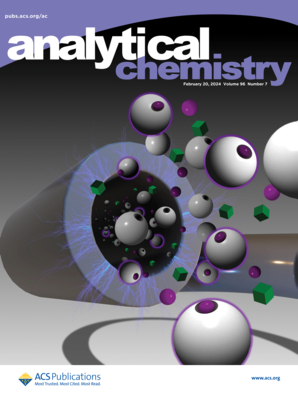机器学习辅助多重荧光标记 miRNAs 图像解码用于霉菌毒素毒性联合评估
IF 6.7
1区 化学
Q1 CHEMISTRY, ANALYTICAL
引用次数: 0
摘要
本文章由计算机程序翻译,如有差异,请以英文原文为准。

Machine Learning-Assisted Multiplexed Fluorescence-Labeled miRNAs Imaging Decoding for Combined Mycotoxins Toxicity Assessment
Mycotoxins, particularly deoxynivalenol (DON) and zearalenone (ZEN), are common food contaminants that frequently co-occur in grains, posing significant health risks. This study proposed a multiplexed detection platform for simultaneous quantification and imaging of three microRNAs (miRNAs) integrated with machine learning to evaluate the combined toxicity of DON and ZEN. Based on Exonuclease III-assisted signal amplification, highly sensitive fluorescent molecular beacon probes (MBs) targeting miR-21, miR-221, and miR-27a were developed, achieving remarkable detection limits of 0.18 pM, 0.22 pM, and 0.21 pM, respectively. The MBs were efficiently delivered into cells via liposome-mediated endocytosis, enabling simultaneous intracellular imaging of the three miRNAs. By integrating machine learning algorithms, including linear discriminant analysis and principal component analysis, with RGB values extracted from cellular fluorescence images, a robust analytical platform was established for classifying miRNA expression patterns induced by various DON/ZEN concentrations. A highest single agent model was subsequently constructed to evaluate the combined toxicity, revealing that ZEN exhibited antagonistic effects on DON at low doses but synergistic effects at high doses. This sensitive and multiplexed detection method demonstrates a strong correlation between miRNA expression profiles and DON/ZEN toxicity, providing an innovative analytical tool for multicomponent toxicity assessment.
求助全文
通过发布文献求助,成功后即可免费获取论文全文。
去求助
来源期刊

Analytical Chemistry
化学-分析化学
CiteScore
12.10
自引率
12.20%
发文量
1949
审稿时长
1.4 months
期刊介绍:
Analytical Chemistry, a peer-reviewed research journal, focuses on disseminating new and original knowledge across all branches of analytical chemistry. Fundamental articles may explore general principles of chemical measurement science and need not directly address existing or potential analytical methodology. They can be entirely theoretical or report experimental results. Contributions may cover various phases of analytical operations, including sampling, bioanalysis, electrochemistry, mass spectrometry, microscale and nanoscale systems, environmental analysis, separations, spectroscopy, chemical reactions and selectivity, instrumentation, imaging, surface analysis, and data processing. Papers discussing known analytical methods should present a significant, original application of the method, a notable improvement, or results on an important analyte.
 求助内容:
求助内容: 应助结果提醒方式:
应助结果提醒方式:


